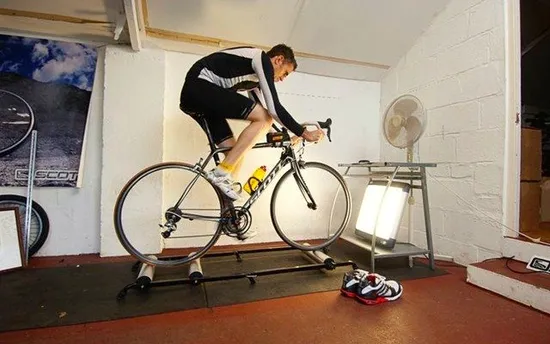Opinions on whether strength and power training should be included in an endurance athlete’s training schedule range from ‘not at all’ on one end of the scale to ‘absolutely’ at the other. The truth inevitably lurks somewhere in between those two.
There are plenty of successful endurance athletes out there who do no gym-based strength workouts whatsoever. They simply train specifically for swimming, cycling and running and reach their performance goals on that basis alone. The closest athletes like this come to building strength and power is in sessions where they increase the speed or resistance involved (swimming with hand paddles or cycling and running on hills, for example).
One of the big arguments that supports this approach is that, if you have limited training time (as is the case for most age-group triathletes), you’re better off focusing on aerobic activities that build the exact type of fitness required for racing. This way you can be sure you’re getting the biggest ‘bang for your buck’ in every workout.
But this may not be the case when an issue of muscular strength, posture or technique is preventing you from reaching your aerobic potential. For example, if you’re always getting injured or lack muscular endurance in your legs. It may also be less true for older athletes for whom building muscle mass is important.

Four pointers to get you started
So if you’re going to incorporate strength and power training into your programme, the following pointers should help:
Start in the off-season as there’ll be an adaptation process when you begin strength training that will result in delayed onset muscle soreness (DOMS). So start slowly and accept that there may be some interruption to your aerobic routine in the first few weeks.
Aim for two strength sessions per week, with at least 48 hours between them to allow your muscles to recover. If you’re doing an aerobic session on the same day, do your strength workout first so you’re not tired going into it.
Choose exercises that work on weaknesses you feel you have in movement patterns that relate to swimming, cycling, running or your general posture. Pick ones that involve whole-body movements, rather than isolating individual muscle groups in the way a body builder would.
Ensure you’re working out with good technique – use a qualified instructor, online video tutorials and mirrors in the gym. Poor form can increase the risk of injury and reduce the effectiveness of strength training dramatically.
(Images: Jonny Gawler)
What benefits have you found from bike power training? Let us know in the comments!